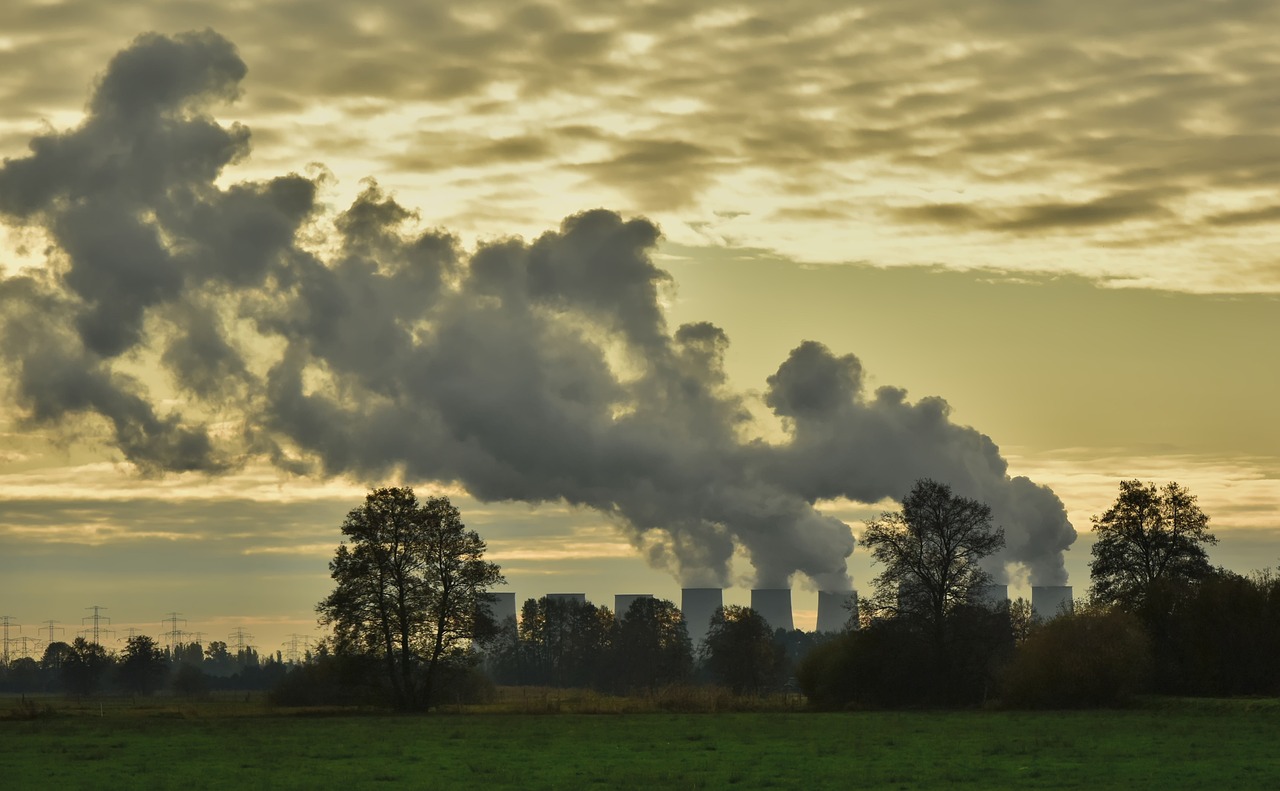The Plastic Impact on Climate Change

Climate change is a topic that is currently garnering a lot of attention in the media, especially with reports of unseasonal and extreme weather events that are taking place around the world. With this increased scrutiny there is a focus on the various contributing climate impact factors to identify what can be done to tackle the problem.
One area that has been established as having a negative impact is related to plastic production. Climate change is impacted by our reliance on plastic and also the side effects of the plastic industry which includes both the manufacture and disposal of plastics.
The global reliance on plastic products and their pervasive presence in our lives is undeniable. From the packaging of everyday goods to manufacturing intricate components across various industries, plastic’s versatility, durability, and cost-effectiveness have made them an indispensable material. In 1907, when the first commercial plastic was released, known then as Bakelite, it was hailed as a wonder material that would revolutionize the world. However, this flexibility and cheapness of manufacturing have come at a cost that couldn’t have been imagined at the dawn of the commercial plastic production age. The exact properties that have made plastic desirable also render it an environmental adversary, a little over a century after its first introduction.
Understanding Climate Change
What exactly is climate change, and how do human activities contribute?
Climate change refers to significant alterations in global temperatures and weather patterns over time. It is primarily driven by human activities that increase the concentration of greenhouse gases in the atmosphere, leading to a rise in Earth’s average temperature, a phenomenon often referred to as global warming.
Many causes are attributed to climate change. Notably, the use of and extraction of fossil fuels, such as oil, gas, and coal, are key driving factors. Seventy-five percent of global greenhouse gas emissions and nearly ninety percent of all carbon dioxide emissions come are caused by using these natural resources.
Power generation is one of the critical causes of climate change. When fossil fuels are burnt, they generate carbon dioxide and nitrous oxide. These gasses can trap the sun’s heat, which can potentially increase global temperatures. This is one of the reasons why renewable power generation, such as wind energy and solar power, are popular alternatives to combat climate change and why coal-fired power plants are considered major polluters.
While Nuclear Power is another power generation method that doesn’t generate greenhouse gases when it is generating power, this energy source comes with its problems, namely the disposal of and storage of toxic nuclear waste, with the US alone generating up to 2,000 metric tons of this waste being generated each year. This might not sound like a lot but some of this waste will need to be stored for up to a million years causing significant challenges.
Other contributing factors to climate change include deforestation since trees capture carbon dioxide. This is why sustainable forestry has become popular, a process where trees are planted to counteract any chopped down. Unfortunately, many of the problems with deforestation relate to illegal logging practices and clearing land for agriculture.
Regarding food production, the environmental problems in this industry are not just related to deforestation and creating pasture for livestock or feed. Food production with the methane from farm animals is an increasing contributing factor, with a third of human-produced methane originating from livestock. Producers also have to grow and manufacture animal feedstocks, and the land and resources to do so, in terms of environmental efficiency are better resourced to directly produce food for humans.
Another big contributing factor to climate change is manufacturing and consumption. Manufacturing often uses fossil fuels in several ways, from powering manufacturing machinery to using them as a material in producing goods. Human consumption is a major cause of GHG emissions, and this is where plastic usage and manufacturing have a role in climate change.
The implications of climate change are far-reaching. Rising global temperatures result in melting ice caps, a rise in sea levels, and the increased frequency of extreme weather events like storms, droughts, and heat waves. Climate change also creates a major threat to biodiversity, disrupting ecosystems and threatening numerous species with extinction.
In the context of human impact, burning fossil fuels for energy, deforestation, industrial processes, and agriculture are usually cited as the main contributors to climate change. However, the role of plastic production and pollution also significantly impacts climate change.
The Role of Plastic Production in Climate Change
We’ve already touched on the fact that human consumption of food and products is a major contributor to climate change, and this is where our use of plastic becomes an issue.
Plastic production contributes to climate change in several ways, some more obvious than others. One of the main issues with plastic is that it has traditionally been manufactured (bioplastics aside) using fossil fuels as its base material. Plastic is typically made from hydrocarbons obtained from crude oil (petroleum), natural gas, and even coal.
The petrochemical industry’s extraction and refining of these natural resources into plastic materials is an energy-intensive process and generates significant greenhouse gas emissions. This is exacerbated by our increasing reliance on plastic as a material.
Governments, businesses, and people are aware of some of the issues of plastic use. That is why legislation has been created in some countries to ban certain plastic products or tackle issues surrounding plastic usage. However, even with this awareness of some of the issues surrounding plastic usage, the demand for plastic is increasing and not falling. A report by the Back to Blue group has suggested that plastic consumption could even double by 2050 without intervention. As The Center for International Environmental Law (CIEL) notes, the petrochemical industry is looking to invest billions to expand plastic production.
The Problem with Single-Use Plastics
Perhaps an even bigger issue than plastic as a material made using fossil fuels, is how we have become accustomed to using plastic. When it was first introduced, plastic was often used in products that had longevity and were used for many years. Later, plastic usage was adapted to become a material of convenience.
Single-use plastics have become the norm and are commonly found in the Fast Moving Consumer Goods (FMCG) sector, including products encompassing food and beverage, beauty, and toiletries, to name but a few. Plastics often make up container packaging, and across other industries, single-use plastics are also used, notably in shipping materials. We have become accustomed to using and seeing these types of plastic materials in our everyday lives. In fact, up until recently we haven’t given their use a second thought as to the longer-term consequences of their use.
Given the global scale of plastic production and use, the cumulative impact of these processes is substantial. Studies estimate that by 2050, the greenhouse gas emissions from plastic could reach over 56 gigatons—10-13 percent of the remaining carbon budget.
The Environmental Cost of Plastic Pollution
Besides directly contributing to climate change, plastic pollution also imposes a high environmental cost. This is because the lifecycle of plastic is problematic and continues to impact climate change long after it has been produced. This is especially so for single-use plastics.
The disposal of plastic waste, often through incineration or in landfills, releases additional greenhouse gases into the atmosphere. Moreover, plastic waste disrupts ecosystems when it finds its way into the natural environment. Plastic waste can leach harmful chemicals into the soil and groundwater, affecting ecosystems and human health. At a surface level, plastic waste also contributes to the visual degradation of natural landscapes.
It is estimated that around eight to ten million tons of plastic waste end up in our oceans annually, wreaking havoc on marine ecosystems. Plastic debris can strangle or suffocate marine animals, and smaller particles, known as microplastics, can be ingested, causing internal blockages or starvation. Plastics also impact the environment as they decompose with issues surrounding chemical leakage.
It is also believed that the plastic found in the ocean contributes to climate change unexpectedly. Scientists have discovered that ocean microplastics impact microalgae and photosynthesis’s efficiency, which degrade plankton’s ability to process carbon dioxide.
Addressing the Issue of Plastic Pollution
Addressing the issue of plastic pollution requires a multifaceted and concerted effort. In addition, while localized efforts are helpful, climate change and plastic pollution is a global problem, and often, it impacts the communities that are least equipped to deal with the problem.
One area that should be a key focus in addressing the issues surrounding the plastic lifecycle is a shift toward a circular economy. A circular economy is one where the overall value of any products or the materials used is conserved for as long as possible, and waste and resource use are minimized. This approach necessitates redesigning products for durability and recyclability, promoting reuse, and improving waste management practices. You can learn more about how the circular economy works in our article, The New Plastic Economy, where we delve deeply into this topic.
Technological innovation also plays a critical role in addressing plastic pollution. Advances in biodegradable and compostable plastics, plastic-to-fuel technologies (pyrolysis), recycling, and waste-to-energy solutions (WtE) can help avoid some of the environmental impacts of plastic.
A shift towards sustainable alternatives to plastic production is crucial in mitigating the plastic impact on climate change. Bio-based plastics that are originally made from renewable resources like corn starch or sugarcane present an alternative. These materials can significantly reduce the carbon footprint of plastic production and are often biodegradable, reducing the environmental impact of plastic waste.
However, it’s essential to note that bio-based and biodegradable plastics are not a complete solution as they still require energy to produce and can contribute to other environmental problems if not managed properly. Therefore, their use should be coupled with efforts to reduce overall plastic consumption and improve waste management.
The Role of Governments and Corporations
Governments and industry have a critical role to play in reducing the plastic impact on climate change. Governments can implement policies encouraging sustainable production and consumption, such as single-use plastics regulations, recycling incentives, and penalties for littering or illegal dumping.
Many initiatives around the world have been designed to reduce plastic use and support sustainable practices. Often these policies are designed to tackle single-use plastics, which are considered the worse offenders in terms of carbon and environmental damage.
For instance, there have been plastic bag bans have been implemented in many countries around the world, such as Bangladesh and Tanzania in Africa. In contrast, some other countries have instead opted to impose a tax on plastic bags. While this is positive, the United Nations has noted that 5 trillion plastic bags are still used around the world every year.
Bans such as these on single-use plastics, including cutlery, straws, and problematic microbead items, are increasingly being rolled out. However, there is still little movement in addressing one of the biggest offenders, single-use plastic drink bottles such as water and soda bottles. Some cities around the globe, universities, and governmental organizations have imposed bans on these types of packaging, but this doesn’t address the problem globally.
To put this into context, the United Nations has estimated that one million single-use plastic bottles are sold every minute, with historically, much of this plastic being “virgin plastic” which is newly produced plastic. Some corporations are moving to biodegradable solutions and recycling plastic to manufacture bottles which is an improvement but not a complete answer.
Ultimately, the solution is not to rely on corporates to shift their production methods but instead for consumers to end their reliance on this type of product. Consumers must move to bottles and containers that can be reused or use more sustainable materials that are more efficiently recyclable, such as aluminum cans. However, this requires a fundamental sea change in the way we consume. At an individual level, we need to be more aware of the materials our goods are packaged in and avoid unsustainable ones.
Simple actions like actively reducing plastic consumption, recycling properly, and participating in community clean-ups can help mitigate the plastic impact on climate change.
Individuals can exert influence through their purchasing decisions, opting for products with less plastic packaging or made from recycled materials. They can also advocate for change by supporting businesses prioritizing sustainability and urging governments to implement more robust environmental policies.
Conversely, corporations can leverage their influence to drive sustainable practices throughout their supply chains. This includes adopting more sustainable packaging solutions, investing in research and development to find alternatives to plastic, and engaging consumers in sustainability efforts. However, corporates tend to avoid making these costly changes without intervention, either at a government level or through consumer demand for alternative products. This is why governments have had to step in and introduce policies such as Extended Producer Responsibility (EPR), a form of legislation destined to make corporations more accountable for the environmental considerations and lifecycle of the products they manufacture. Learn more about ERP in our guide.
The Future of Plastic and Climate Change
The impact of plastic on climate change is a complex issue. While plastic has brought many conveniences to our lives, its environmental toll is substantial and cannot be ignored. A concerted effort from governments, corporations, and individuals will be necessary to curb plastic production and pollution and mitigate their impact on climate change.
The Plastic Collective is committed to helping reduce climate change and environmental damage by improving plastic waste capture and supporting recycling initiatives in local communities.
The Plastic Collective work with communities to reduce plastic waste. The Plastic Collective provides education programs, supply machinery, and training to communities to build sustainable plastic recycling micro-enterprises. We also work closely with businesses to reduce their plastic footprint through our innovative plastic offsetting scheme that helps businesses move towards plastic net zero.
Image by Peggychoucair from Pixabay

